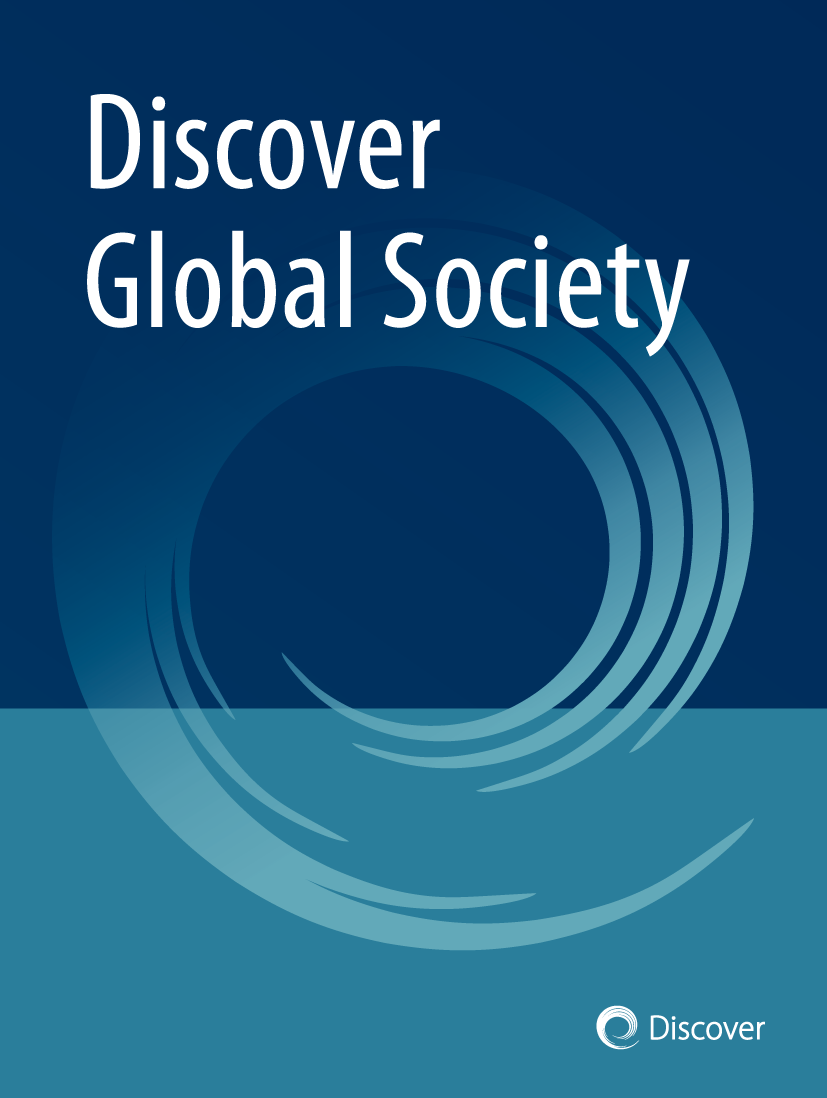Janusian governance: on moving when the new stands still
Published in Social Sciences, Law, Politics & International Studies, and Philosophy & Religion

I. The Evening After, and the Two-Faced Gaze
It began with a walk in Brasília and a conversation with my friend Larissa Spinola. We were not speaking in abstractions; we were trading impressions of Lula’s first years after Bolsonaro, testing words against what we were seeing and hearing. We had expected the emblematic public choreography of the new: fresh programs, brand-new acronyms, the reassuring grammar of rupture. Yet what kept returning to the surface was quieter and more stubborn: rooms reopening; councils reconvening; benefits and routines being re-anchored so that people might trust the floor again. It felt less like a parade of novelty than like someone opening windows in a house that had been shut too long.
On the way home, a figure appeared and stayed: Janus, the Roman with two faces, not the emblem of indecision but the discipline of looking backward and forward at once. The image clarified a rhythm I had felt but had not named. We were watching practices of restoration (repairing institutions, reviving guarantees) entangled with practices of invention (designing tools, categories, and oversight) that had no exact precedent. The point, I began to think, was neither to celebrate the past nor to worship the new, but to learn the craft of pairing them so that each limits the other’s excess and frees the other’s promise. The paper calls this craft Janusian governance: not a compromise, but a counterpoint; two lines held together so the composition moves.

II. The Stillness Inside Motion
If Janus lent double vision, another figure warned about a trap that stalks modern governance. Walter Benjamin’s Angel looks upon wreckage piling at his feet even as a storm called progress blows him into the future; propelled, yet unable to repair. It is an unsettling portrait because the feeling is familiar: dashboards that become the argument itself; pilots that never ripen into decisions; an administrative rhetoric of agility under which institutions grow curiously inert. Innovation, stripped of its companion, begins to freeze. We mistake motion on screens for movement in the world; the storm that calls itself progress pins our capacity to act. Under late capitalism, public administration inhabits precisely this tension: it must manoeuvre like Janus even as it is buffeted like Benjamin’s Angel.

Brazil taught through scenes, not slogans. One was the reopening of participatory councils. Just convening was a relief. The room breathed again and our deliberative voice returned. Yet reinstatement is not the same as consequence. When agendas remain upstream, evidence arrives late, or budgets are already locked, deliberation risks becoming choreography: everyone is heard, minutes are filed, decisions are made elsewhere. The answer is not to abandon councils but to rework the procedural plumbing so that council deliberation has binding force, aligning timing, agenda, and authority. The act is restorative in spirit and inventive in execution: two faces, one hinge.
Another scene, briefer still, sits in the ride-hailing world that so many of us inhabit as passengers: PLP 12/2024, the draft bill proposing a minimum remuneration per hour, caps on daily connection hours, and shared social-security contributions for platform drivers. On its surface, the gesture is recognizably restorative. Ordinary labor guarantees returning to a market that had declared itself post-labor. But making those guarantees real presumes new administrative capacities: auditable platforms, traceable data flows, oversight that can look an algorithm in the eye. If rights dominate without instruments, they remain a speech act; if instruments dominate without rights, they dissolve into technical theatre. The bill looks both ways at once, and its truth lies in the pair.
These scenes sharpen the claim: innovation is not the hero by default. There is a porcelain version of novelty (impressive, fragile, cold to the touch) that paralyzes. It appears when numbers displace reasons; when automated eligibility denies at scale with thin avenues for appeal; when “hybrid” legal categories promise flexibility yet keep workers in limbo. The antidote is not more novelty, but companionship: restoration that lends legitimacy and care; invention that lends reach and capacity. There, movement begins.
III. A Practice, Not a Doctrine
From that evening with Larissa, the paper took shape as an effort to say something plainly in a philosophical key: after a corrosive cycle, Brazil’s governance did not spring from a void; it proceeded by re-stitching public capacities and composing them with new instruments so they could survive the weather. This is not nostalgia. A restored program that cannot be audited may soothe, but it will not stand. A gleaming tool untethered from a public claim may dazzle, but it will not care. Janusian governance asks us to bind them (repair with invention, invent with care) not as a taste for the middle but as an ethics of action under constraint.
The ethics matters because late-capitalist turbulence supplies headwinds, not clean horizons. Hybridity is not a failure of will; it is often the condition for doing anything at all. Modernist managerial logics persist (hierarchy, standardisation, metrics) even as late-capitalist contradictions demand improvisation and oversight that the old repertoire cannot supply. To treat this as pathology is to miss the point. The oscillation itself, moving between hope and audit and between forward reach and backward guardrail, can be the engine of progress when grand narratives have thinned. Programmes launched in sincerity, inspected in irony, revised in sincerity again: the cadence is humbler than rupture and braver than return.
The Brazilian threads keep the thought honest. When councils reopen, their dignity is not only symbolic; it is institutional memory insisting on consequence. When a platform bill promises a wage floor, its plausibility is not only legal; it is administrative imagination insisting on instruments that make the promise visible in a payslip and enforceable in practice. Even the familiar architecture of a cash transfer (think of the reflex to restore what worked) carries this double life: it can both shield households and reinscribe managerial gatekeeping, unless the apparatus that counts learns to be accountable (legible to citizens, contestable by design). The discipline is always the same: let each face veto the other’s worst impulse. Without the restorative guardrail, invention grows brittle and remote. Without the inventive hinge, restoration congeals into rite.
What remains, then, is a modest invitation rather than a grand doctrine. In any room where the future leans hard (new app, new framework, new reform) ask aloud what must be restored so that the novelty means what it claims. In any room where the past leans hard (bring back the council, revive the program) ask what must be invented so that the return is more than symbol. Tie the answers together. The knots are not glamorous. Small hinges on which larger futures swing.
I return, finally, to that evening with my friend because it grounds the argument in ordinary time: buses and bills, rooms airing out, people measuring words against facts. Janus’s lesson is not an aesthetic; it is a practice. Keep both faces in view. Move because they are held together. And whenever the storm called progress pins your feet, remember the other figure in the paper (the immobilised angel) so you can turn his gaze into Janus’s stride, not by force of will alone, but by composition: the kind that lets a polity act without being captured by its own instruments.
Follow the Topic
-
Discover Global Society

This is an interdisciplinary, international journal that welcomes research on the complexities of modern global society, its development and its challenges.
Related Collections
With Collections, you can get published faster and increase your visibility.
Impact of Diversified Socio-Economic Parameters on Governance through Education and Social Reform
In today’s world, leading a country or community is not as simple as it used to be. Many things—like money problems, gender gaps, access to technology, and different cultures—affect how decisions are made and how people take part in public life. As societies grow and change, leaders need to find ways that include everyone and adjust to new challenges. Education and social change are two powerful tools that can help. They don’t just teach people—they also help fix unfair systems and give people a voice.
This collection looks at how different social and economic issues shape leadership when they connect with education and reform. It asks how things like income gaps, lack of digital access, and cultural differences affect how rules are made and followed. It also explores how learning can help people who often feel ignored become more involved in their communities. By sharing stories from different countries and ideas from experts, the collection shows what has worked and what still needs work when trying to lead through change.
This collection seeks research from many fields—like politics, society, education, and public service. It welcomes ideas that show how learning helps people understand their rights, how social groups push for better rules, and how changes in systems can make things fairer. It also looks at examples from large democracies and growing nations, where mixed social and money issues bring both problems and chances to lead in better ways.
This Collection supports and amplifies research related to SDG 4,SDG 10, SDG 16 & SDG 17
Keywords:Governance; Education Reform; Socio-Economic Diversity; Civic Engagement; Global Perspectives; Social Justice; SDGs; Participatory Democracy; Institutional Capacity; Policy Innovation.
Publishing Model: Open Access
Deadline: Feb 28, 2026
The Rise of AI: Reshaping Careers and Redefining Workforce Dynamics
Artificial intelligence (AI) has emerged as a revolutionary force in the field of technological advancement, with the potential to transform various aspects of our society. Employment is one sector where AI is predicted to have a significant impact, as it brings with it a variety of opportunities and challenges. According to a World Economic Forum report, automation and artificial intelligence are predicted to displace around 85 million jobs across various industries by 2025, while also creating approximately 97 million new job opportunities. According to a McKinsey Global Institute report, by 2030, up to 375 million people, or approximately 14% of the global workforce, may need to shift jobs due to the deployment of automation and AI. However, widespread AI use is expected to boost the economy. According to a PwC estimate, AI might contribute up to $15.7 trillion to the global economy by 2030, with benefits across many industries.
AI looks to try to automate repetitive and monotonous jobs, improve productivity and decision making, and allow people to focus on higher-value work and creativity. It also provides an opportunity for entrepreneurs and experts to venture into unknown territory, fuelling economic growth and creating job possibilities in cutting-edge industries. Along with opportunities, it may present major challenges. For example, automation due to AI could potentially lead to a displacement of certain job roles, and workers would need to adopt new ways of working and acquire new skill sets to remain in the workplace; however, not all individuals have equal access to educational opportunities or the ability to upskill, potentially leading to disparities and exacerbating socioeconomic inequality. Furthermore, ethical problems around AI have yet to be addressed; it appears that this area will get more challenging as we construct more advanced AI systems.
Without a doubt, the impact of AI on employment is a complex interplay of both positive and negative influences. While AI has the potential to automate ordinary tasks, improve decision-making, and stimulate creativity, it also raises worries about job displacement, skill gaps, and ethical concerns. To effectively navigate this landscape, a detailed investigation of AI and its impact on employment is required, as there is currently a shortage of knowledge in this area. Some of the questions below required immediate response in order to increase our level of understanding and, in some ways, prepare us for the future:
· How can individuals adapt and acquire new skills to remain employable in an AI-driven workforce?
· What are the potential economic implications of AI adoption, including job creation and income inequality?
· What measures can be taken to address potential job displacement and ensure a just and inclusive transition?
· How will AI impact the nature of work, job roles, and the distribution of tasks between humans and machines?
· What ethical considerations arise from the use of AI in employment, such as bias, fairness, and transparency?
· What opportunities does AI present for innovation, entrepreneurship, and the creation of new job roles?
· How can policymakers, educators, and businesses collaborate to prepare the workforce for the AI revolution?
· How can AI be leveraged to enhance productivity, decision-making, and the overall quality of work?
· What are the potential long-term effects of AI on the structure of industries and the overall economy?
· How can AI be effectively utilized to augment human capabilities and enable more fulfilling and meaningful work experiences?
· What are the key considerations for organizations in terms of workforce planning and talent management in an AI-driven era?
· How can AI technologies be harnessed to address societal challenges, such as reducing bias and discrimination in hiring processes?
· What are the implications of AI on job satisfaction, employee well-being, and work-life balance?
· What role does AI play in fostering workplace diversity, inclusion, and equal opportunities for all?
· How can governments and policymakers encourage responsible AI adoption while ensuring protection for workers and their rights?
· What are the potential implications of AI on the gig economy, freelancing, and remote work arrangements?
· How can AI be leveraged to address emerging skills gaps and enable lifelong learning opportunities for workers?
· What are the implications of AI on the future of education and the skills and knowledge required for the workforce of tomorrow?
This list is not exhaustive, but it may serve as a starting point for additional research on this topic. This Collection attempts to answer some of the questions stated above, as well as to study the complicated impact of AI on employment, looking at both its positive and negative elements.
Understanding the implications of social changes brought about by technological innovations is fundamental for societies to prepare for upcoming challenges. Critical reflection and careful analysis can help ensure that the future we are building is a desired and sustainable for all. In this context, the contribution of researchers, public policy analysts, politicians and social movements is important to offer reflective and theoretical-methodological perspectives to anticipate possible consequences of ongoing social changes.
Keywords: Artificial intelligence (AI), AI readiness, desired future, future of societies, future of work, materializing future, sustainability
Publishing Model: Open Access
Deadline: Jul 31, 2026


Please sign in or register for FREE
If you are a registered user on Research Communities by Springer Nature, please sign in